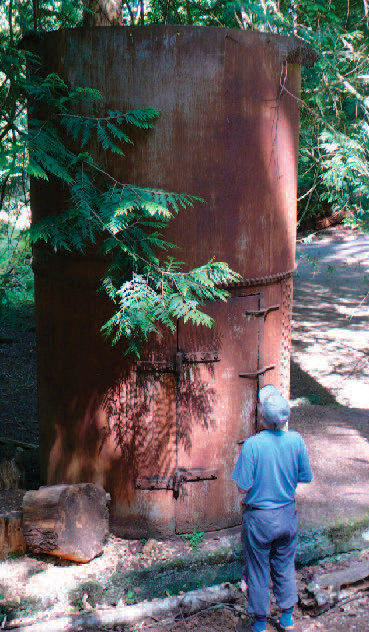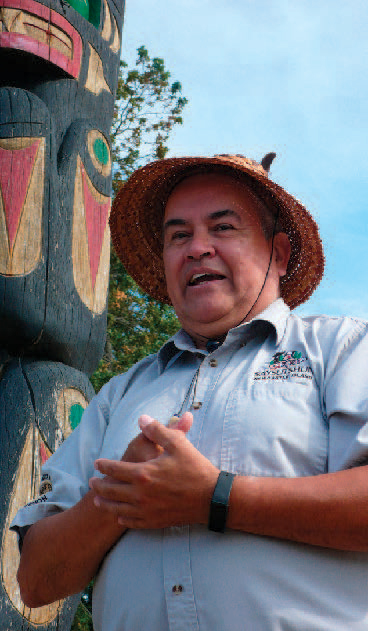After a relaxing evening in the comfortable Coast Bastion Hotel on Nanaimo’s waterfront, our adventure begins with loading our bikes on the 12-person ferry, greeting the few other passengers and chugging across Newcastle Island Channel. Ten minutes later we’re greeted by Dave Bodaly, artist, weaver, knowledge keeper and cultural interpreter of the Snuneymuxw First Nation. He’s taking us on a 1.5-hour cultural tour that begins at the totem pole near the ferry dock. The first thing we learn is not to call this a totem pole.
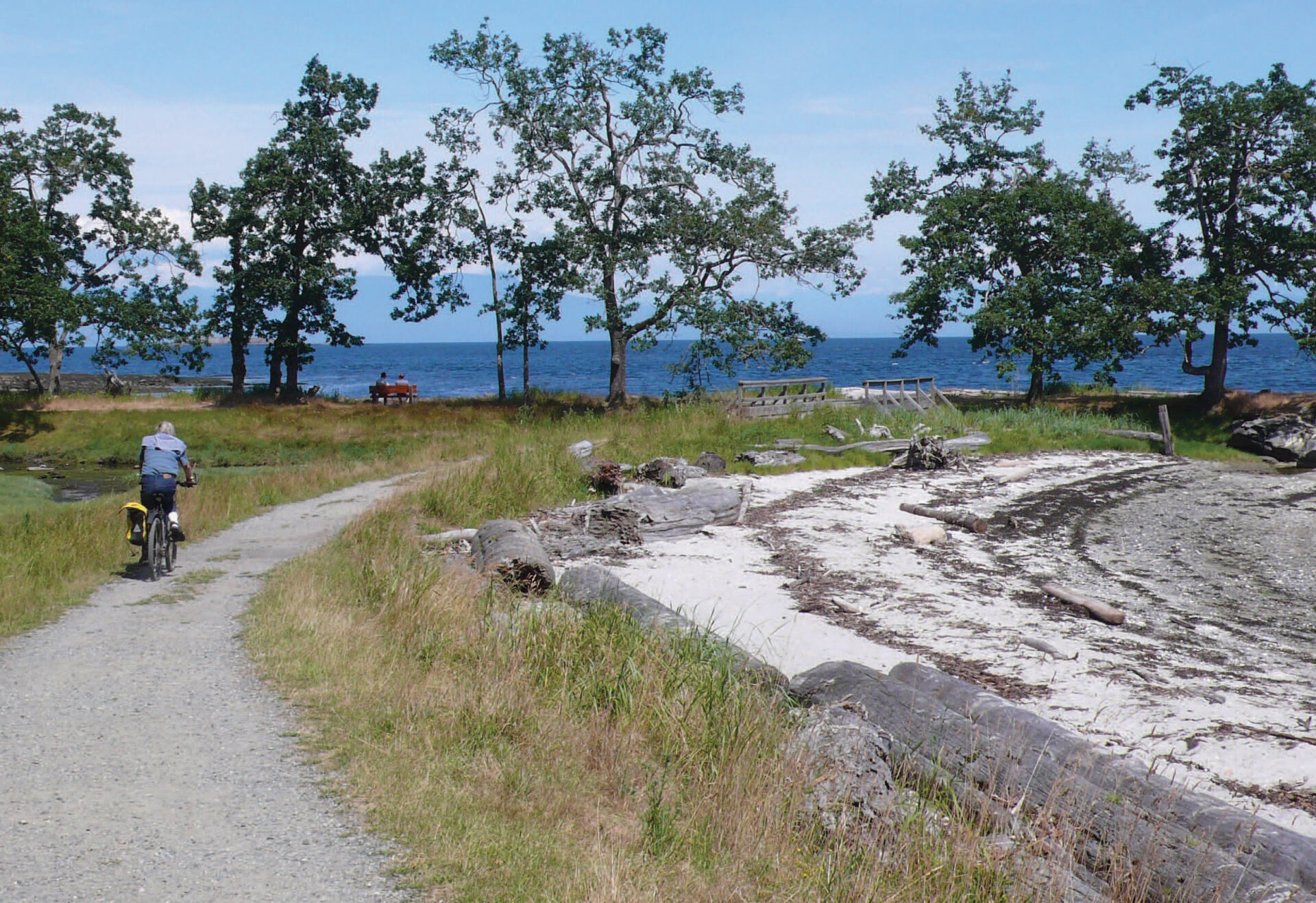
“This is a welcome pole. We don’t call them totem poles because the totem pole comes from the north, from the Haida,” says Bodaly. “This one is from 2000 as part of the millennium. It was made by one of the artists in our reserve, Noel Brown. He was contracted to do this one and the other one on the other side of the field. If you look up at the top, you see it has an eagle there. Underneath the eagle is a bear. In the centre of the pole where he holds his arms together, there’s a salmon. We have five different kinds of salmon here and from the eggs to the full-grown fish we have 10 different names.”
He interprets the pole for us and tells us there are many transformation stories in their history that tell of the transformer, who came and transformed the world to the way things are today. “That’s our first transformation story and I have many more transformation stories to share with you on this island.”
It’s an enjoyable and informative presentation by a well-respected Snuneymuxw educator whose long history of interpreting his culture for schools, workplaces and presentations like this have made him a skillful and knowledgeable guide. The tour, all within the same area, is suitable for all ages and covers the nation’s sacred village sites, its traditions and cultural history as well as practices that have been handed down from generation to generation. Considering that the Snuneymuxw people have occupied and thrived on this land for at least 10,000 years, that’s a lot of generations.
“The garry oak groves were very important for our people,” he tells us as we follow him to the oak’s shade. He points to ground beneath it.“ The camas that grew under them were very important because the flower’s bulb was like a potato. We dug those bulbs from the ground in the summertime and harvested them and crushed them up and made camas bread from them. We’re looking at re-establishing an area here with more garry oaks so we can bring some of that back again.”
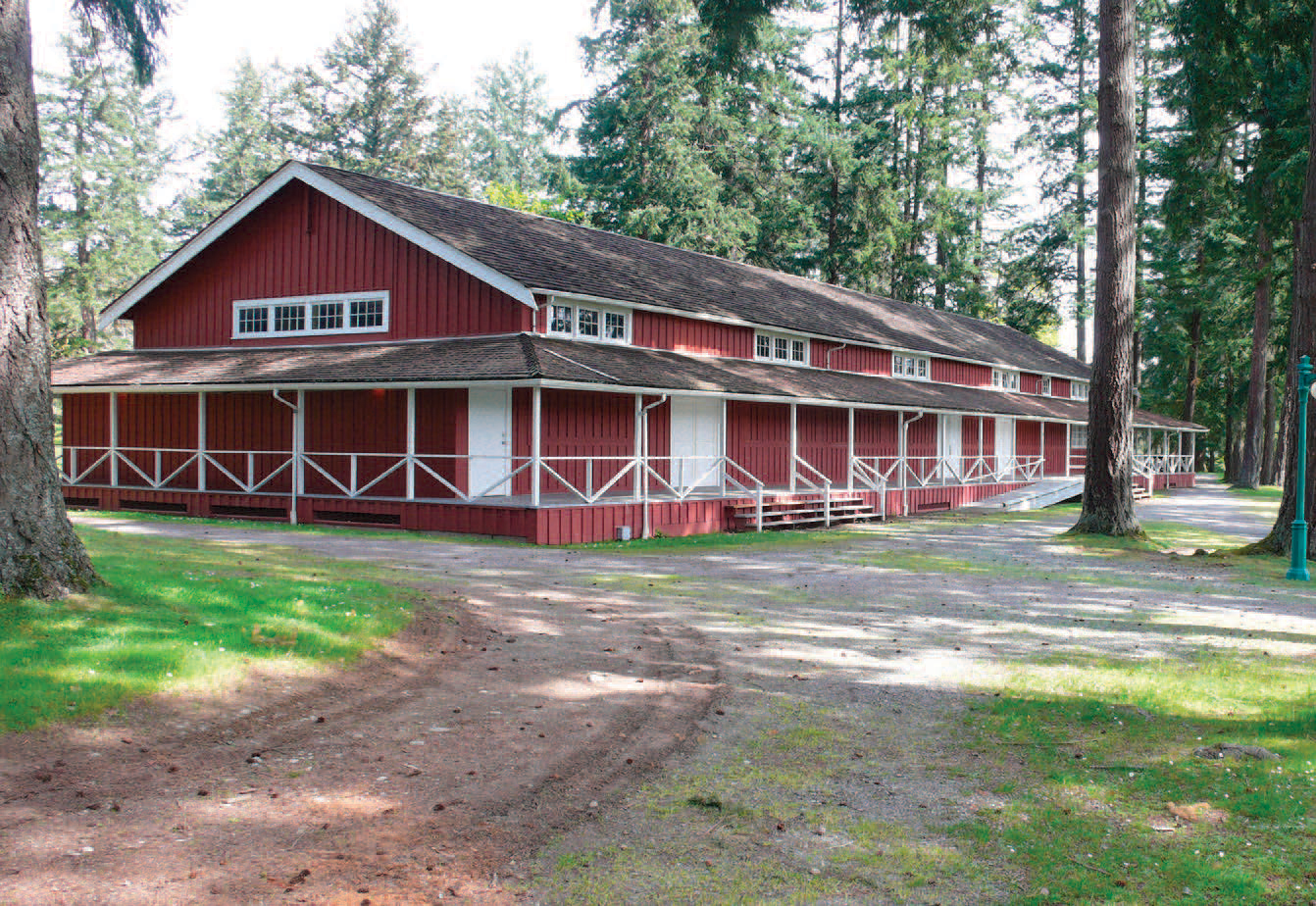
We also learn of much more recent history: such as the building of a dance pavilion in 1931 by the Canadian Pacific Railway’s British Columbia Coast Steamship Services, and the area around Mark Bay’s use as a playground for the rich and privileged. A bathhouse, picnic shelters, trails and the pavilion with its famous spring-loaded dance floor—still in good shape—all served to give a very good time to visitors, mostly from the Lower Mainland during the “island resort” era. The Second World War put an end to all that. Men and boats were needed elsewhere. In 1955, the City of Nanaimo bought the park, selling it to the province five years later.
Bodaly takes us to the nearby pulp stone quarry where two giant millstones over six feet in diameter catch the eye. Prized for their high quality, the stones were used to grind up wood in paper mills all across North America when the McDonald Cut-Stone Company was created in 1923. It operated until 1932. The old stonecutter sits alongside, now a moldering support for blackberry bushes.
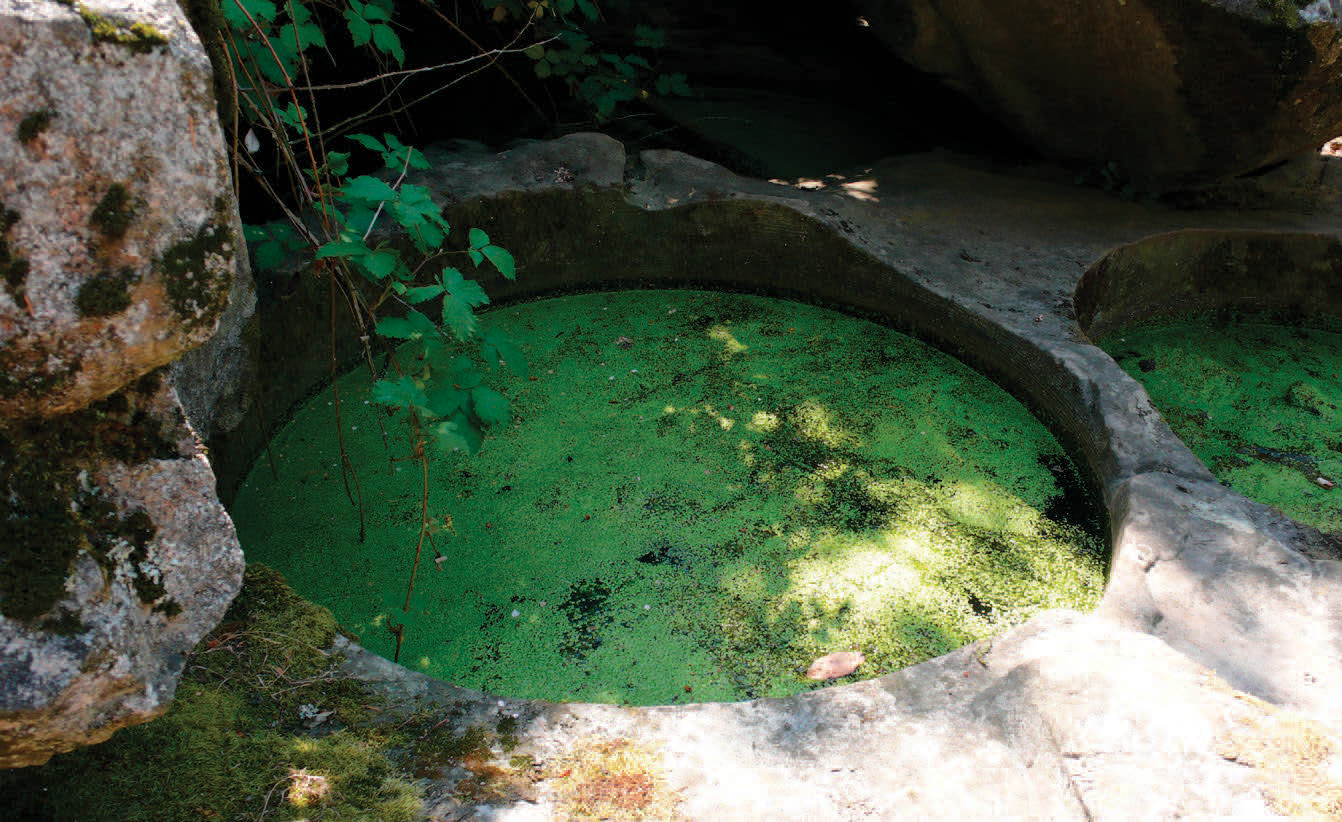
“Under the quarry there’s a tunnel that goes under the ocean, and a train track went under here for hauling coal off the island at the turn of the century,” says Bodaly. “All of the shafts in this area go from the northwest to the southeast from this island to Protection Island to Gabriola Island and 10 kilometres out into the Salish Sea. ”The manmade Mallard Lake was created in the centre of the island to serve the mining industry as well.
Heading into the rambling pavilion, where the concession is located, it’s hard not to feel nostalgic and to think of earlier times. It’s the only pavilion of its kind that has survived from the island resort era between the two world wars and was restored with the help of local volunteers in 1984. Inside, a sleek, gleaming cedar canoe has taken centre stage since our visit over a year ago.
“Here we have a Coast Salish canoe that I helped carve,” says Bodaly. “We did this as a project last year and launched it at the end of one of my tours. It took about two months, using traditional methods. It’s a single one-man racing canoe, 20 feet long and made from redcedar.”
As our tour ends, I can’t help but think how welcome this programme must be in the schools as well as on the island. It’s now time to take the advice he gave us at the very beginning.
“Saysutshun is a place of renewal and healing,” says Bodaly. “We would walk the trails if we lost a loved one or were sad. We would have people bring us to this island and we would walk this trail in a counter-clockwise direction. Three hours later our spirits would be lifted and we would be ready to return. It was very important to us to have a place of healing.”
So we do. In addition to the pavilion and the pulp stone quarry, there are other industries that once flourished on the island and traces of these endeavours are awaiting our discovery. On the northwest side, along sandstone cliffs, are a few remnants of the Japanese saltery that used to thrive on Newcastle in the days when Nanaimo was called “Herring Town.” For 50 years the fish were netted by Japanese fishermen, cleaned, salted and packed in wooden boxes on the island for export to China. A half-a-million pounds of fish was salted in most years. Inevitably the industry collapsed as stocks dwindled in the early 1940s, along with the start of the Second World War when the internment of the Japanese Canadians occurred. A few pilings and foundations are all that remain. Now on foot, we eventually come to beautiful Midden Bay and sit on the bench there to watch the passing ferry and pleasure boat traffic while eating our lunch.
Just south of Midden Bay, we take a short path down to the impressive sandstone quarry, where several massive stone cylinders recline above Newcastle Island Channel. One of these pillars was raised from the seabed from the wreck of the barque Zephyr that sank off Mayne Island in 1872. The prized sandstone it was carrying was in demand and can still be found in the original San Francisco Mint building, as well as the BC Penitentiary, the Nanaimo Post Office and Victoria’s Christ Church Cathedral. Several plaques here tell the story of the wreck of the Zephyr and the history of the quarry, which started operations in 1869.
On this side of the island, we look across to the city of Nanaimo and enjoy both the breeze off the water and the views of kayakers, boats large and small and the BC Ferries loading and unloading in Departure Bay.
I check my watch. They told us at the pavilion that ice cream would be delivered this afternoon. We need to get back there. Salted caramel goes fast and I need some sweet energy scooped into a waffle cone, as we still have to check out the airshaft for the miners who laboured 400 feet below the island. For that we need to continue on the trail back to the pavilion and then cycle 1.5 kilometres to trace the line of the first discovered coal seam that runs between Kanaka and Midden bays.
So far, we’ve been immersed in several layers of history: stories from ancient Indigenous cultures and the much more recent incursions with the Japanese saltery, coalmines, pulp stone mills, sandstone quarries and a resort playground. What haven’t we checked off our list? We saw the downy woodpeckers but missed the rare champagne raccoons, and we sat at Kanaka Bay but didn’t feel the presence of its namesake, the notorious murderer Kanaka Pete. Definitely there will be time to linger at the pavilion and to just soak it all in. Some days are lived much more fully than others, and this is one of them. It has been a busy day, but as promised earlier by our guide, wandering the sylvan trails has refreshed us.
If You Go
Getting There
From the mainland, BC Ferries operates regular ferries from Horseshoe Bay in West Vancouver to Nanaimo’s Departure Bay on Vancouver Island, as well as from Tsawwassen to Duke Point, just south of Nanaimo. Check schedules, fares and packages at bcferries.com.
Where to Stay
The Coast Bastion Hotel offers all amenities and is conveniently located close to the park and ferry dock, the museum and the downtown area.
More Info
Tourism Vancouver Island: vancouverisland.travel
Tourism Nanaimo: tourismnanaimo.com
For info on the Saysutshun ferry, cultural tours, etc: newcastleisland.ca
Camping and Marine Park
This is a terrific place for family camping, with shelters, swimming beaches, private forested campsites, bike and kayak rentals, playground and trails. There are also plenty of mooring buoys and docks in Mark Bay for boaters, with a nearby pub accessible by tender or pub boat.
Cyclists
Be aware that e-bikes are not allowed on the island. Also note that some of the trails are unsuitable for bikes. The cycling routes are delineated on the maps and trail markers. Our route combined both cycling and round-trip walking. If walking the trails, allow three hours.
Champagne Raccoons
While our guide has seen these furtive and rare little critters many times, these albino raccoons are a rare sight. They have a recessive gene so that there is no black pigment produced in the fur and have been spotted only here in the past 40 years.
COVID-19 Protocols
Most businesses are open at time of press, but are operating under COVID-19 regulations, including reduced services and reduced capacities. Check before you visit.
